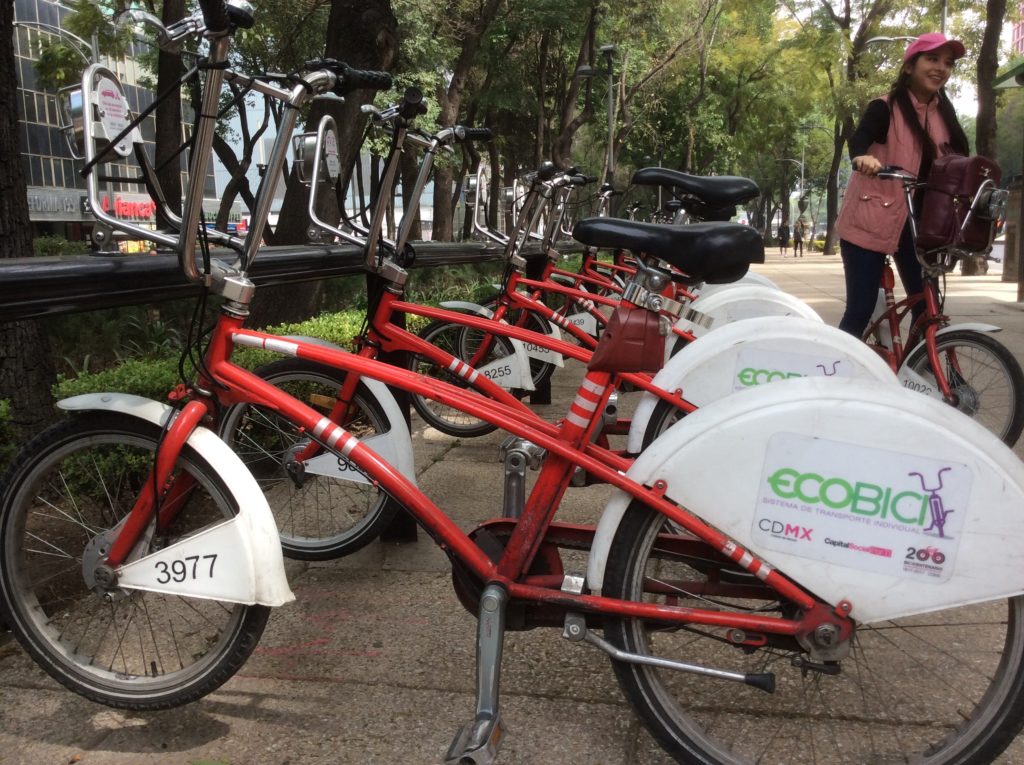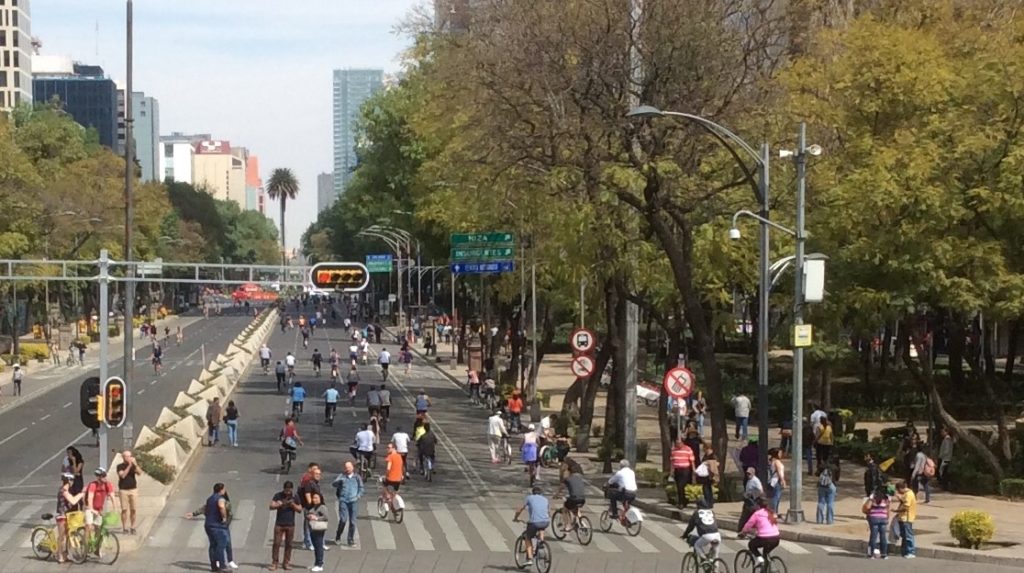Mobike has started in Mexico City’s upscale Polanco district, but this is part of wide launch across Mexico. They are going everywhere and are treating Mexico seriously. That’s pretty awesome. If the big bike-sharing question of 2017 was “can these Chinese companies succeed internationally?”, the question for 2018 is now “how big can they get?” Watch for a big acceleration in bike-sharing globally this year.
Sitting in Mexico, relapsing in my coffee addiction and looking at the ironically placed bike sculpture outside (see photo above), it strikes me that China’s bike and ride-sharing wars have become centered on Mexico. In many ways, this is the new frontline for both Mobike vs. Ofo and Didi vs. Uber. And for Uber, Mexico could end up being their last stand internationally. I’ll cover that in Part 2.
But first my take on Chinese bike-sharing in Mexico and Latin America.
Point 1: Going international was not an obvious decision.
China’s leading internet / digital companies have not really gone after consumers outside of China. They have focused on connecting foreign sellers to Chinese consumers (i.e., Alibaba). They are providing foreign services to traveling Chinese consumers (i.e., Alipay). But we don’t see a lot of big efforts to bring foreign consumers onto their platforms. There are some exceptions to this, such as Alibaba’s focus on SE Asian consumers.And maybe JD’s recently announced push into Europe.
But most of the world’s consumers cannot name many Chinese brands (Lenovo? Huawei?). And while they probably know Jack Ma, they don’t actually use Taobao. I was at a meeting with Alibaba President Michael Evans last year and one thing he said that really stuck with me was he thought foreign consumers were the biggest gap for the company.
So why did Mobike and Ofo did push out internationally so aggressively in 2017?
My take is it wasn’t a grand strategy. Instead it was more about a couple of effective individuals giving it shot, getting some traction and then just running with it. For Mobike, that meant hiring Chris Martin in early 2017, giving him a single intern and seeing what he could do. For ofo, they also began hiring top people internationally. In the UK and Ireland, Joseph Seal-Driver took the reins and is growing their business there.
So the international push is an interesting phenomenon.
Point 2: In Latin America, it’s mostly about Brazil and Mexico right now.
So why does Mexico matter in Chinese bike-sharing right now? Because Latin America matters and that means Brazil and Mexico.
- These are the two largest economies by both GDP and population.
- The largest cities in Latin America are (in order) Mexico City at 24M (metro area in 2017), Sao Paolo at 23M (metro area, 2017), Buenos Aires and Rio De Janeiro at 15M (metro area, 2017).
- Of the top ten cities in Latin America by population, 6 are in Mexico and Brazil.
So this is really a fight about Mexico and Brazil. You need those to win.
Point 3: There is little competition for dockless bicycles in Mexico right now.
Bicycles are pretty common in Mexico. You see them all over the place. And in Mexico City, there are a couple of rental programs. The most well known is Ecobici, a docked bicycle program (picture below). The bikes are kind of clunky, although they do have nice lights. And people do ride them in the downtown area a lot.
But dockless bicycles make docked bicycles obsolete. So I don’t think they are much of a threat. Plus, it doesn’t look like this company has done anything in the past year as dockless bike have taken off everywhere.
There are also lots of smaller, more traditional bike rental services around (picture below). But again, not a serious threat. Mexico is pretty much an open market.
Point 4: Mexican consumers’ adoption rates for bike-sharing are the big unknown.
This is the question I have been thinking about. Bike-sharing is hugely popular in China. But Chinese consumers are hyper-adopters of pretty much anything with a QR code.
We’ll know in a month of two how popular it is in Mexico. The government seems supportive. Payment might be a hurdle as a lot of the population is unbanked. Assuming the major barriers are removed, it will come down to how much Mexican consumers like bike-sharing. I’m pretty optimistic.
I took the two below pictures on a typical Sunday. The government closes off the main boulevard and it is filled with bike riders. That’s a good sign.
Finally, it is worth pointing out that this is a pretty athletic place. You see lots of people walking around in gym clothes.
***
My conclusion is everything looks pretty great for bike-sharing in Mexico and Latin America. I think it will come down to who gets here first and executes best.
That’s it for Part 1. In Part 2 (here), I go into Uber vs. Didi in Mexico – which is going to be awesome.
Cheers from Mexico, Jeff
———
I am a consultant and keynote speaker on how to accelerate growth with improving customer experiences (CX) and digital moats.
I am a partner at TechMoat Consulting, a consulting firm specialized in how to increase growth with improved customer experiences (CX), personalization and other types of customer value. Get in touch here.
I am also author of the Moats and Marathons book series, a framework for building and measuring competitive advantages in digital businesses.
Note: This content (articles, podcasts, website info) is not investment advice. The information and opinions from me and any guests may be incorrect. The numbers and information may be wrong. The views expressed may no longer be relevant or accurate. Investing is risky. Do your own research.






